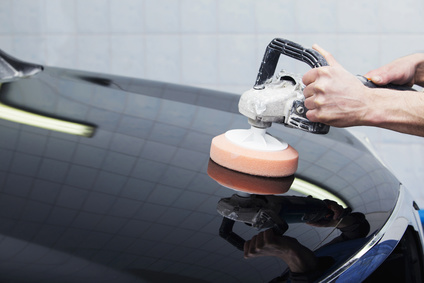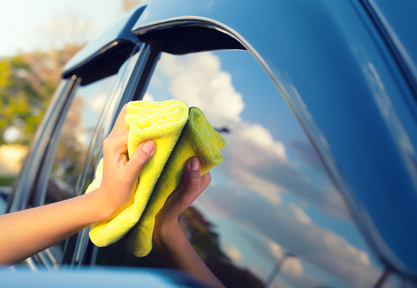When it comes to washing the car, there are many options at your disposal. Aside from the basic wash, additional treatment with hot wax is also offered, for example. For a long time this was regarded as the pinnacle of car maintenance. Previously, sealing with wax made particular sense, because then the various weather conditions made the paint dull and lose its colour. Today we are a step ahead, because car manufacturers add a second layer on top of the primary paint for protection.
An ordinary car wash is still advisable, but it doesn't necessarily have to involve hot wax. A few exceptions: the vehicle should - before being sold, for example - shine really nicely. The colours appear more powerful. Hot wax also ensures that dirt doesn't stick so quickly - it can also delay the next car wash. In summer such sealing is practical, since it makes the removal of resin and insect secretions easier.
Generally it's preferable to have the paint treated by a professional rather than to have it treated with hot wax in the context of a car wash. The professional cleans the surface thoroughly in several steps, applies the sealant and finally polishes the car. This has its price, but it also lasts about two years. In contrast, at a car wash wax particles are merely sprayed on, and they give only brief protection. If the car was not cleaned adequately beforehand, the optical effect will not be particularly worth seeing. In that case it's only a drying aid, since the water pearls off - that's why this service is also often called "shine drying".
Information on car cleaning in addition to a normal car wash:
 |
Car washes offer a hot wax option for sealing the paint at extra charge. This makes it shine beautifully and lets the water pearl off. The result: no water spots after the car wash. The effect doesn't last for long though - a week later the layer has already worn off, and at the next car wash the expensive hot wax must be applied again.
There is, however, a more affordable option, although it requires manual labour: sealing by means of water-repellent cold wax. It's available at specialist shops for a few euros, and it's applied to the paint with a microfibre cloth. Aside from the price, this method has another advantage over treatment with hot wax: it endures up to eight car washes. Nano sealant is significantly more expensive, but it lasts for months.
There are car washes which spray special natural wax on the paint, which doesn't stick to the windows, and leaves behind no lubricant film there. Excess wax is simply washed off - simple. If the car's paint is already dull, however, which can be the case with older vehicles in particular, polish is advised instead of wax. Afterwards the paint will shine again.
After driving through the car wash, the vehicle shines once more on the outside, but on the inside manual labour is called for. Floor mats are particularly badly affected - they are not dealt with in a mere sponge-down. The effort required for cleaning floor mats depends on the material. Rubber mats are easily taken out and wiped clean. With floor mats made of velour or other materials, this can't be done. If you want to free it thoroughly of dirt, you have two options:
If you have a high pressure cleaner available while washing the car, beat the floor mats and rinse them off with the jet on both sides. Prior shampooing is possible but not absolutely necessary. The water is then beaten out of the floor mats as well as possible, before they are placed in the boot (on a plastic sheet). At home you can then let them dry in the sun.
An alternative to a high pressure cleaner is a washing machine. In most cases floor mats are so flexible that they can be placed in the machine. Cleaned at a maximum of 40 degrees with washing powder and fabric softener, they look new again.
 |
Cleaning the rims should be part of any car wash, particularly since it prevents the baking in of brake dust. Most importantly, dirtied aluminium rims make the car unattractive. Aside from brake dust, in winter mostly road salt adheres to the wheels. If the high pressure cleaner doesn't completely remove dirt, a special rim cleaner can help. Highly polished rims and chrome rims should not be cleaned with rim cleaner, as this can affect the sensitive surface.
Admittedly there are household items such as toothpaste or oven spray which can be alternatives to rim cleaner - but rim cleaner also contains corrosion protection, which protects the wheels from rust. It's simply sprayed on, and if necessary stubborn dirt is loosened with a brush. Good rim cleaners are characterised by the fact that after the application time the wheels are simply sprayed down with water, and then they look brand new.
One can make a science of car maintenance, and spend several hours every week making the vehicle shine inside and out. This is not necessary, however. In everyday life a basic wash on a monthly basis is enough. When it comes to more serious dirt, floor mats and rims are cleaned by hand. When it comes to cleaning the undercarriage and engine, a professional should be used, in order to avoid damage to the electronics. For paint sealing which protects against dirt and lime spots for several weeks, cold wax is preferable to hot wax. With these tips you'll get more out of the next car wash.